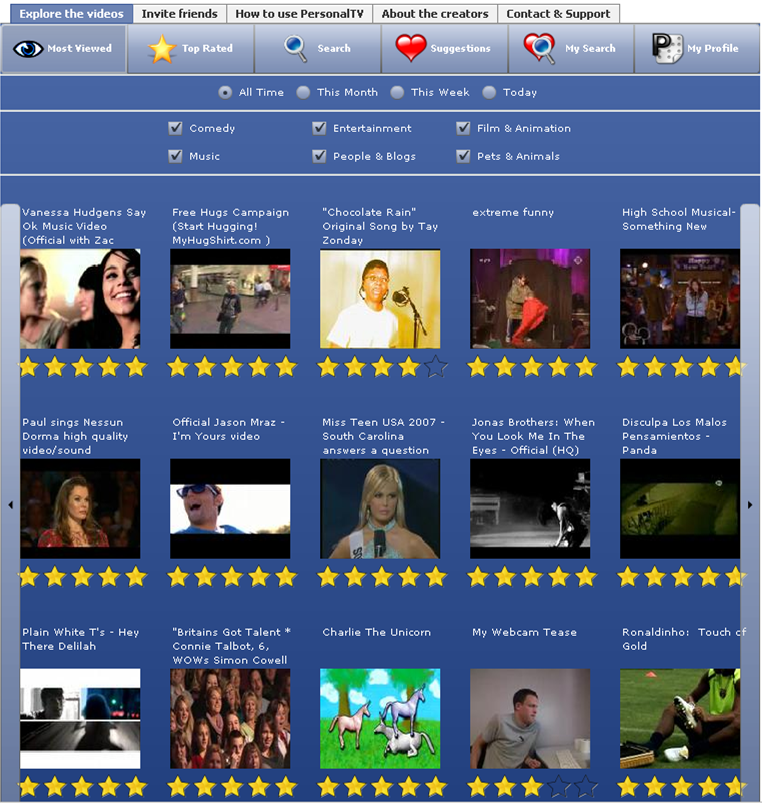Recommender Systems
The enormous offer of video content on the internet and TV broadcast networks requires new instruments to assist people in selecting the appropriate content. Currently, video retrieval is done with one dimensional keyword based search tools, which are far too inadequate to filter out all the irrelevant content. User ratings could improve the search results but this method has a big dependency on the community itself.
By continuously monitoring interactions, a user profile, that reflects the user's interests, can be constructed. These monitored user interactions are twofold: implicit feedback of the viewing behavior and explicit user feedback consisting of ratings.
The obtained user profile will used by a personalisation algorithm to offer the most suitable content. Personalisation algorithms can be categorised as follows:

- Rule-based Personalisation Systems: These rely on manually or automatically generated decision rules
- Content-based Personalisation Systems: A comparison is made between the extracted features from the unwatched or unrated items and the user profile.
- User-based Collaborative Filtering Systems: These techniques involve matching the ratings of a current user with those of similar users.
- Item-based Collaborative Filtering Systems: An item-item similarity matrix is built and used to generate recommendations.
- Hybrid Personalisation Systems: These combine the advantages of multiple personalisation systems.
These systems get richer by adding appropriate (user generated) metadata, user feedback, social networks and context to the algorithms.
Application domains are in e-commerce, Web 2.0 personalisation, community matching, personalised advertising, media delivery, ...